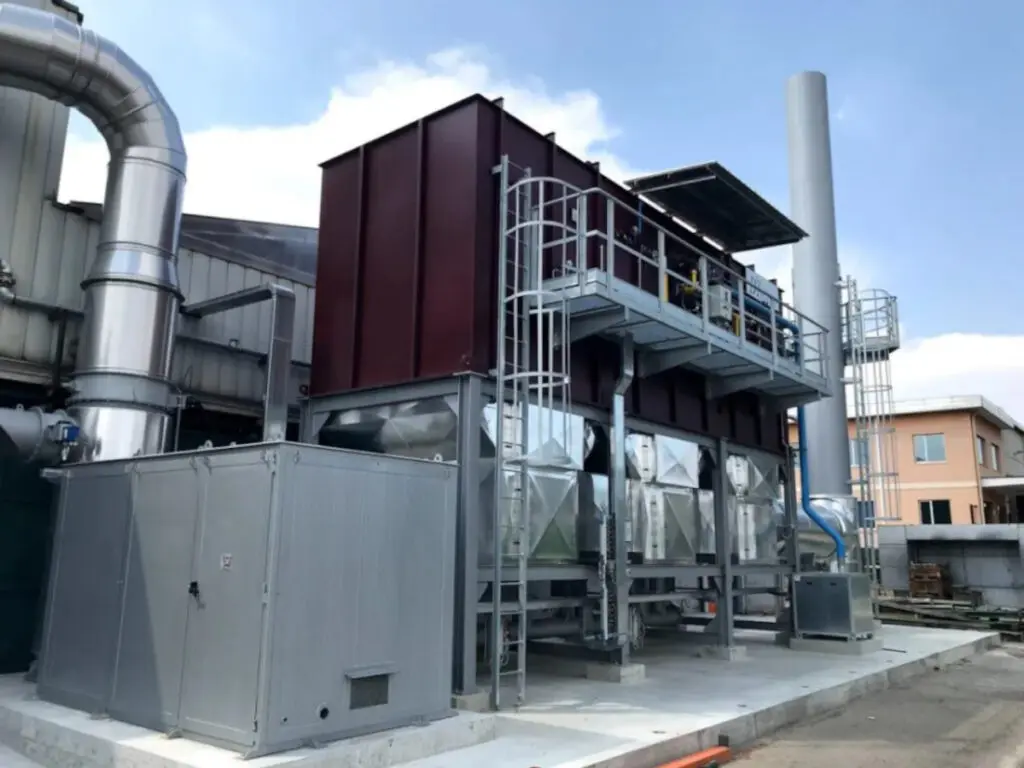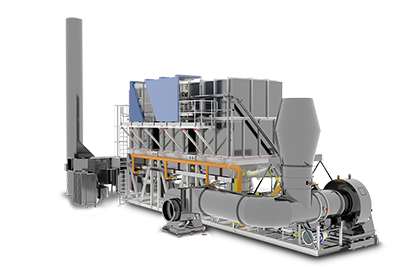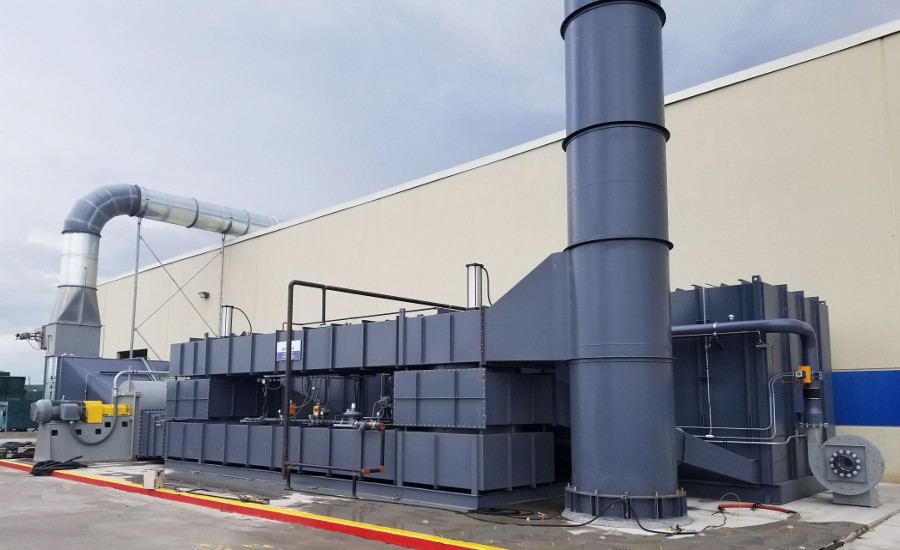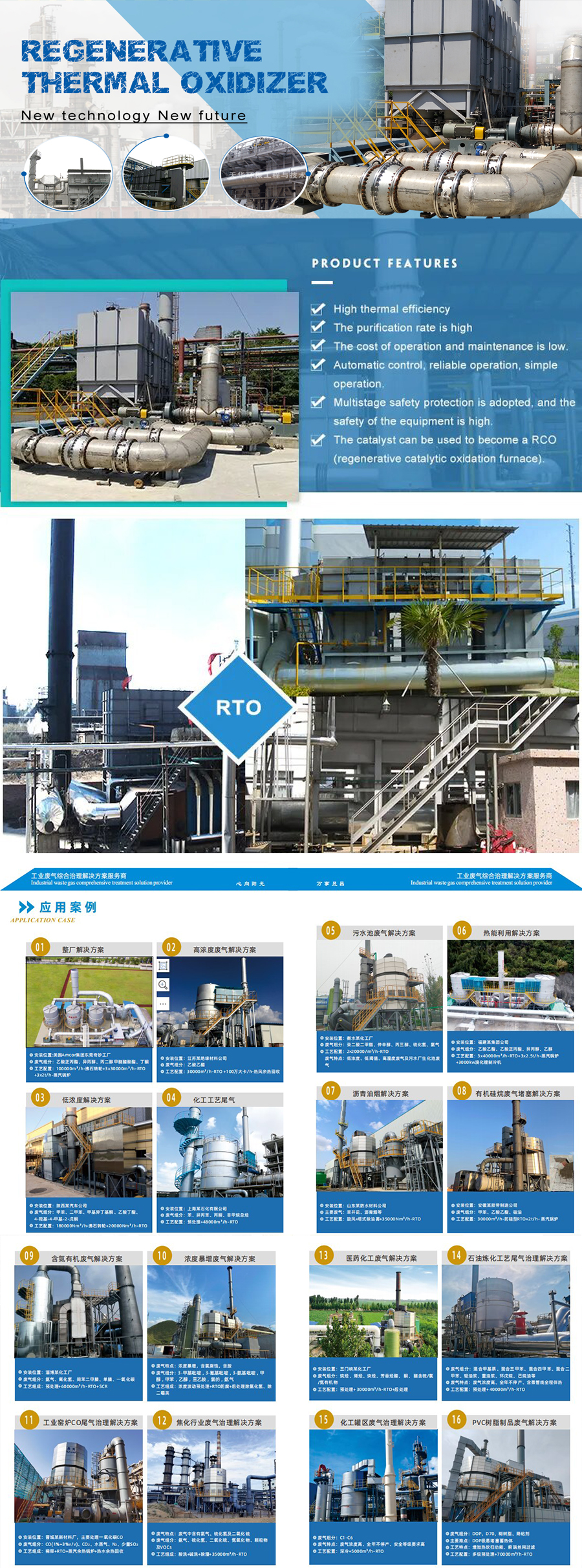Maklumat Asas.
taip
Instrumen Pemantauan Alam Sekitar
Jenama
Raidsant
keadaan
baru
Kecekapan Bersih
99.8%
Permohonan
Industri Kimia
Fungsi Utama
Penyingkiran Gas Sisa
Tanda dagangan
Raidsant
Pakej Pengangkutan
Filem Dibalut
asal usul
ZheJiang China
Penerangan Produk
HangZhou Raidsant Machinery Co.;,; Ltd.; mengambil jurusan dalam membangunkan dan mengeluarkan mesin pelletizing penyejuk serbuk inovatif dan mesin rawatan gas sisa industri yang berkaitan.; Dengan sejarah pengeluaran hampir 20 tahun,; kami mempunyai pasaran yang baik di lebih daripada 20 wilayah di China,; dan beberapa produk kami telah dieksport ke Arab Saudi, Singapura, Mexico,; Brazil,;Sepanyol,; Amerika,; Rusia dan Korea,; dan lain-lain;
Spesifikasi:;
* Lebih padat daripada kemudahan sedia ada
* Kos operasi rendah
* Jangka hayat kemudahan yang panjang
* Tiada perubahan tekanan
Tujuan:;
Sistem penjimatan tenaga yang membakar sebatian organik meruap (VOC); dan sisa gas dengan menggunakan haba,; dan ia mengumpul lebih 99.;8% haba buangan gas ekzos dengan menggunakan bahan penjana semula seramik (mangkin); dengan luas permukaan yang besar dan kehilangan tekanan rendah.;
Permohonan:;
1.; Proses pengeringan mengecat
2.; proses percetakan logam
3.; proses pengeringan gentian
4.; proses pita pelekat
5.; proses rawatan sisa
6.; proses pembuatan semikonduktor
7.; asap,; proses kuih-muih dan membakar
8.; proses petrokimia,;
9.; proses pembuatan ubat dan makanan,;
10.; proses penjanaan VOC yang lain
Kelebihan:;
* Lebih padat daripada kemudahan sedia ada
* Tiada perubahan tekanan
* Kadar pemulihan haba tinggi (lebih 95%);
* Rawatan VOC yang sempurna (lebih 99.;8%);
* Jangka hayat kemudahan yang panjang
* Kos operasi rendah
* Boleh dibuat dalam bulatan atau segi empat
Penerangan Umum dan Ciri:;
1.; Prinsip operasi
Kaedah pengendalian yang menukar nyahcas secara berterusan dengan memutarkan Injap Putar
2.; Perubahan Tekanan Proses
Tiada perubahan tekanan kerana arah angin berubah mengikut susunan mengikut putaran Injap Putar
3.; Kos Pelaburan
Sekitar 70% daripada Jenis Katil
4.; Ruang Pemasangan
Ia adalah kapal tunggal jadi ia padat dan memerlukan ruang pemasangan yang kurang.;
5.; Penyelenggaraan
Mudah untuk menyelenggaranya kerana Rotary Valve adalah satu-satunya 1 bahagian yang bergerak.;
Bahagian pengedap Rotary Valve jarang haus kerana ia berputar pada kelajuan rendah.;
6.; Kestabilan
Tiada risiko dalam proses kerana ia sentiasa dibuka walaupun Rotary Valve menghadapi masalah.;
7.; Kecekapan Rawatan
Kecekapan rawatan dikekalkan kerana bahagian pengedap jarang haus walaupun ia dikendalikan untuk masa yang lama.;
Alamat: No.3, Jalan Tengah Zhenxin, Zon Pembangunan Ekonomi, HangZhou, ZheJiang
Jenis Perniagaan: Pengeluar/Kilang, Syarikat Perdagangan
Julat Perniagaan: Bahan Kimia, Elektrik & Elektronik, Jentera Pembuatan & Pemprosesan, Keselamatan & Perlindungan
Pensijilan Sistem Pengurusan: ISO 9001
Produk Utama: Pelletizer, Flaker, Pastillator, Granulator, Chemical Pelletizer, Vocs
Pengenalan Syarikat: HangZhou Raidsant Machinery Co., Ltd., sebelum ini dikenali sebagai Kilang Jentera Plastik HangZhou Xinte mengambil jurusan dalam menghasilkan jentera kitar semula plastik yang inovatif. Dengan pengalaman hampir 20 tahun, kami mempunyai pasaran yang baik di 20 wilayah di China, dan beberapa produk kami telah dieksport ke Indonesia, Rusia dan Vietnam, dsb. Produk utama kami termasuk DZ Type Pastillator, barisan kitar semula tayar sisa, Big Caliber Plastic Talian kitar semula mesin pencincang paip, mesin salutan timah penyepuhlindapan berterusan, PET jenis QX, Talian basuh PE & badan kapal, penghancur kitar semula plastik SDP dua rel, pemotongan panas SJ unit pembuatan butiran, barisan produk tiub PVC (cinquefoil), barisan produk bahan PVC berbentuk ganjil untuk pintu dan tingkap, barisan produk butiran dalam air dan Mesin pencincang untuk plastik dan kitar semula. Kami memperoleh 5 paten teknikal.
Syarikat kami memberi penekanan kepada pembinaan semula teknikal, mengimport teknologi canggih dari dalam dan luar negara, dan membangunkan produk baharu secara berterusan. Prinsip kami adalah mencabar untuk kualiti tinggi, menawarkan produk terbaik. Kami sedang berusaha untuk merealisasikan slogan kami. Memuaskan pelanggan kami adalah usaha kami yang kekal.
Kami sedang mencari pelanggan atau ejen luar negara. Jika anda berminat dengan cadangan kami, sila beritahu kami produk mana yang paling mungkin menarik minat anda atau pelanggan anda. Kami sepatutnya sangat berterima kasih jika anda memberi kami beberapa idea tentang prospek pasaran untuk produk kami. Kami berharap untuk mendengar maklumat yang menggalakkan daripada anda tidak lama lagi! Adalah menjadi matlamat kami bahawa kami berharap kami dapat membina hubungan yang baik dengan anda sekarang atau dalam masa terdekat. Sila jangan teragak-agak untuk menghubungi kami jika anda mempunyai sebarang pertanyaan atau permintaan.
Kami juga mengalu-alukan kedatangan anda ke syarikat kami untuk membincangkan perniagaan dan berunding dengan kami. Untuk meluaskan lagi pasaran dan pelanggan kami, syarikat kami mengalu-alukan pelanggan dari dalam dan luar negara dalam isyarat jenama baharu berdasarkan konsep pengurusan baharu sepenuhnya—kualiti, penghormatan, perkhidmatan. Kami sedang mencari sistem kualiti pengurusan ISO 90001 untuk memenuhi keperluan pelanggan kami!

What is the role of heat recovery in a regenerative thermal oxidizer?
Heat recovery plays a crucial role in the operation of a regenerative thermal oxidizer (RTO) by improving its energy efficiency and reducing fuel consumption. The primary function of heat recovery in an RTO is to capture and transfer heat from the treated exhaust gases to the incoming untreated gases, minimizing the need for additional external heating.
Here’s a closer look at the role of heat recovery in an RTO:
- Energy Efficiency: RTOs are designed to achieve high thermal efficiency by utilizing the heat recovery principle. The heat recovery system consists of heat exchangers or beds filled with ceramic media, such as structured ceramic blocks or random ceramic saddles. These beds alternate between the exhaust gas flow and the incoming untreated gas flow.
- Heat Transfer Process: During operation, the hot exhaust gases from the industrial process flow through one bed of the heat exchanger, transferring heat to the ceramic media. The media absorbs the heat, and the temperature of the exhaust gases decreases. Simultaneously, the cooler incoming untreated gas flows through the other bed, where it absorbs the heat stored in the media, preheating the gas before it enters the combustion chamber.
- Bed Switching: The direction of gas flow through the beds is periodically switched using valves or dampers. This switching operation allows the RTO to alternate between different beds, ensuring continuous heat recovery and thermal oxidation of the pollutants. By efficiently recovering and reusing heat from the exhaust gases, the RTO reduces the amount of external fuel needed to maintain the required operating temperature.
- Reduction in Fuel Consumption: The heat recovery mechanism in an RTO significantly reduces the fuel consumption compared to other types of oxidizers. The preheating of the incoming untreated gas stream reduces the energy required to raise the temperature of the gas to the combustion temperature, resulting in lower fuel usage and operational costs.
- Economic and Environmental Benefits: Heat recovery in RTOs offers economic benefits by reducing energy costs and improving the overall sustainability of the facility. By minimizing fuel consumption, heat recovery contributes to a lower carbon footprint and helps meet environmental goals by reducing greenhouse gas emissions associated with the combustion process.
The effectiveness of heat recovery in an RTO depends on factors such as the design of the heat exchanger, the choice of ceramic media, the flow rates of the exhaust gases and incoming untreated gas, and the temperature differential between the two streams. Proper sizing and optimization of the heat recovery system are essential to ensure efficient heat transfer and maximize energy savings.
Overall, heat recovery is a key component in the design of an RTO, allowing for improved energy efficiency, reduced fuel consumption, and environmental sustainability.

Can regenerative thermal oxidizers be remotely controlled and monitored?
Yes, regenerative thermal oxidizers (RTOs) can be remotely controlled and monitored using advanced automation and control systems. Remote control and monitoring capabilities offer several benefits in terms of operational efficiency, maintenance, and troubleshooting. Here are some key points regarding the remote control and monitoring of RTOs:
- Automation Systems: RTOs can be integrated with automation systems that enable remote control and monitoring. These systems utilize programmable logic controllers (PLCs), distributed control systems (DCS), or other similar technologies to manage and optimize the operation of the RTO.
- Remote Control: With remote control capabilities, operators can adjust and modify the operating parameters of the RTO from a central control room or even remotely through secure network connections. This allows for convenient and efficient control of the RTO, making it easier to optimize performance, adjust settings, and respond to changing process conditions.
- Remote Monitoring: Remote monitoring systems enable real-time monitoring of various parameters and performance indicators of the RTO. These systems can provide insights into the operational status, temperature profiles, gas flow rates, pressure differentials, and other critical variables. Operators can access this information remotely, allowing them to assess the system’s performance, identify potential issues, and make informed decisions.
- Alarms and Notifications: Remote monitoring systems can be programmed to generate alarms and notifications based on predefined conditions or thresholds. This allows operators to receive immediate alerts in case of deviations from normal operating conditions or the occurrence of any critical events. Prompt notifications facilitate timely response and troubleshooting, minimizing downtime and potential risks.
- Data Logging and Analysis: Remote control and monitoring systems often include data logging capabilities, which capture historical data regarding the RTO’s operation and performance. This data can be analyzed to identify trends, evaluate efficiency, and optimize the system’s operation over time. It also helps in compliance reporting and maintenance planning.
- Integration with SCADA Systems: RTOs can be integrated with supervisory control and data acquisition (SCADA) systems, which provide a centralized platform for monitoring and controlling multiple processes and equipment within a facility. Integration with SCADA systems allows for a comprehensive overview of the entire operation and facilitates coordinated control and monitoring of various systems.
It is important to ensure that the remote control and monitoring systems are implemented with appropriate cybersecurity measures to protect against unauthorized access or cyber threats. Manufacturers of RTOs often provide guidance and recommendations for implementing secure remote access to their systems.
Overall, the remote control and monitoring capabilities of RTOs enhance operational efficiency, enable proactive maintenance, and facilitate faster response times, contributing to the effective and optimized operation of the air pollution control system.

Regenerative Thermal Oxidizer vs. Thermal Oxidizer
When comparing a regenerative thermal oxidizer (RTO) to a conventional thermal oxidizer, there are several key differences to consider:
1. Operation:
A regenerative thermal oxidizer operates using a cyclical process that involves heat recovery, while a thermal oxidizer typically operates in a continuous mode without heat recovery.
2. Heat Recovery:
One of the primary distinctions between the two systems is the heat recovery mechanism. An RTO utilizes heat exchanger beds filled with ceramic media or structured packing to recover heat from the outgoing gases and preheat the incoming gases, resulting in energy savings. In contrast, a thermal oxidizer does not incorporate heat recovery, leading to higher energy consumption.
3. Efficiency:
RTOs are known for their high destruction efficiency, typically above 95%, which enables effective removal of volatile organic compounds (VOCs) and other pollutants. Thermal oxidizers, on the other hand, may have slightly lower destruction efficiencies depending on the specific design and operating conditions.
4. Energy Consumption:
Due to the heat recovery mechanism, RTOs generally require less energy for operation compared to thermal oxidizers. The preheating of incoming gases in an RTO reduces the fuel consumption required for combustion, making it more energy-efficient.
5. Cost-effectiveness:
While the initial capital investment for an RTO can be higher than that of a thermal oxidizer due to the heat recovery components, the long-term operational cost savings through energy recovery and higher destruction efficiencies make RTOs a cost-effective solution over the lifespan of the system.
6. Environmental Compliance:
Both RTOs and thermal oxidizers are designed to meet emissions regulations and help industries comply with air quality standards and permits. However, RTOs typically offer higher destruction efficiencies, which can enhance environmental compliance.
7. Versatility:
RTOs and thermal oxidizers are both versatile in terms of handling a wide range of process exhaust volumes and pollutant concentrations. However, RTOs are often preferred for applications where high destruction efficiencies and energy recovery are critical.
Overall, the key distinctions between a regenerative thermal oxidizer and a thermal oxidizer lie in the heat recovery mechanism, energy consumption, efficiency, and cost-effectiveness. RTOs offer superior energy recovery and higher destruction efficiencies, making them an attractive option for industries that prioritize energy efficiency and environmental compliance.

editor by CX 2023-10-16
